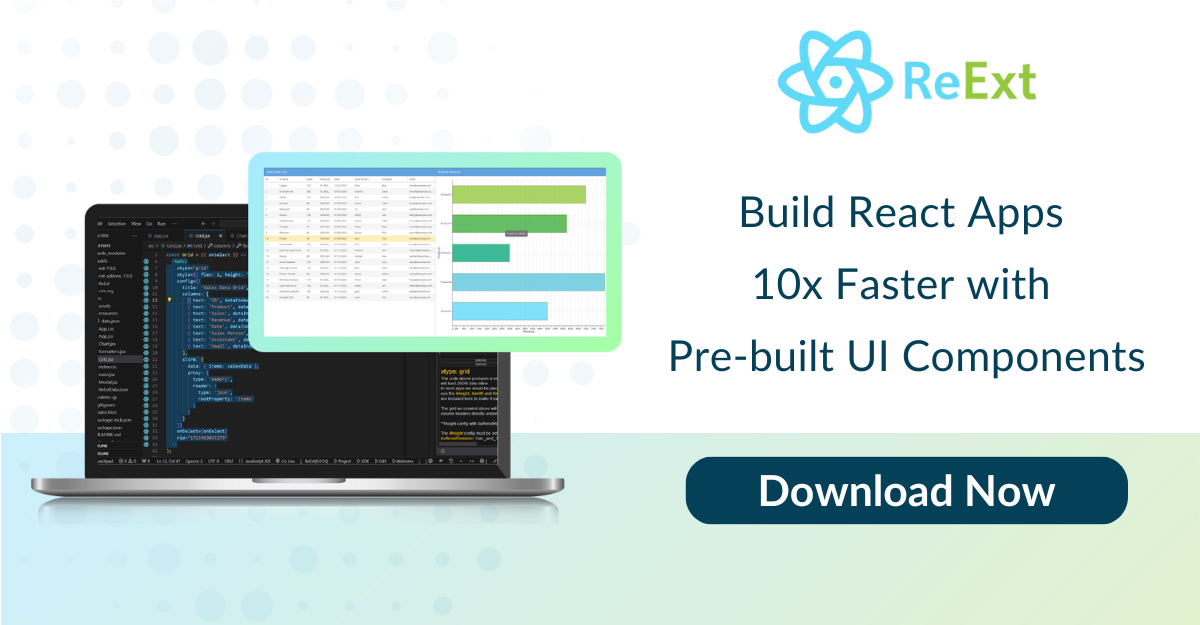How ReExt Optimizes React Applications
React’s popularity continues to soar. It focuses on performance, speed, and data management. React is one of the most popular frameworks used by developers today. Its demand and popularity continue to grow. This makes the need for solutions and tools that enhance performance a necessity.
ReExt tackles performance issues that developers face. It addresses bottlenecks in data management and content management. This is achieved by integrating seamlessly into the React framework. In this blog post, we will take an in-depth look at ReExt. We will explore how it integrates into React to optimize applications. This includes enhancing performance, simplifying processes. Hence, ensuring consistent UI/UX design for all components.

You will readily notice features such as accelerated server-side rendering. There are built-in security provisions and easy application construction. These features aim to reduce development time. A comparative study of ReExt against popular tools will be provided. This includes Material UI, Tailwind UI, and React-Bootstrap. The comparison will show developers why they should consider adopting it.
The core features of ReExt are easy to use due to efficient data and component management. This leads to quick application development. It offers strong components, handles large datasets, and provides flexibility for designers. Keep reading to learn how ReExt can transform your React development methods.
What is ReExt?
ReExt is a system for integrating Sencha’s Ext JS components into React applications. This integration allows developers to create complex user interfaces. It delivers high performance. With ReExt and React together, developers can build modern web applications. They can use ready-to-use components from Ext JS. They can also leverage React’s dynamic capabilities.
Performance Optimization with ReExt
ReExt optimizes performance using Ext JS’s components. These are specifically designed for complex interactions and large data. For example, the data grid can process millions of records. It maintains performance during such processing. Features like buffered rendering ensure responsive applications. Infinite scrolling helps keep applications efficient even with heavy data loads.
Server-Side Rendering
ReExt’s integration with React simplifies server-side rendering (SSR). SSR improves initial page load times. It also enhances SEO. By pre-rendering the UI on the server, fully rendered pages are delivered to users. This boosts speed for those on slower networks. It benefits users with lower-spec devices too. Additionally, SSR ensures content visibility for search engines, increasing reach.
Simplifying Development with ReExt
ReExt simplifies the development cycle with a large collection of pre-built, customizable React UI components. Developers don’t need to create elements from scratch. Ext JS components like grids, charts, and forms speed up work. This approach enforces consistency in applications and enhances the user experience with a uniform look and feel.
Data Management
Efficient data management is critical for modern applications. ReExt offers strong data handling features such as data binding, stateful data, and effective data loading strategies. The framework’s data grid includes sorting, filtering, and pagination. These features help organize and present large datasets seamlessly.
ReExt blends the strengths of Ext JS and React. It creates an ideal environment for building high-performance, data-heavy applications. With performance optimization, server-side rendering, simplified development, and strong data management capabilities, ReExt is a great resource. It is perfect for developers looking to create modern web applications efficiently and quickly.
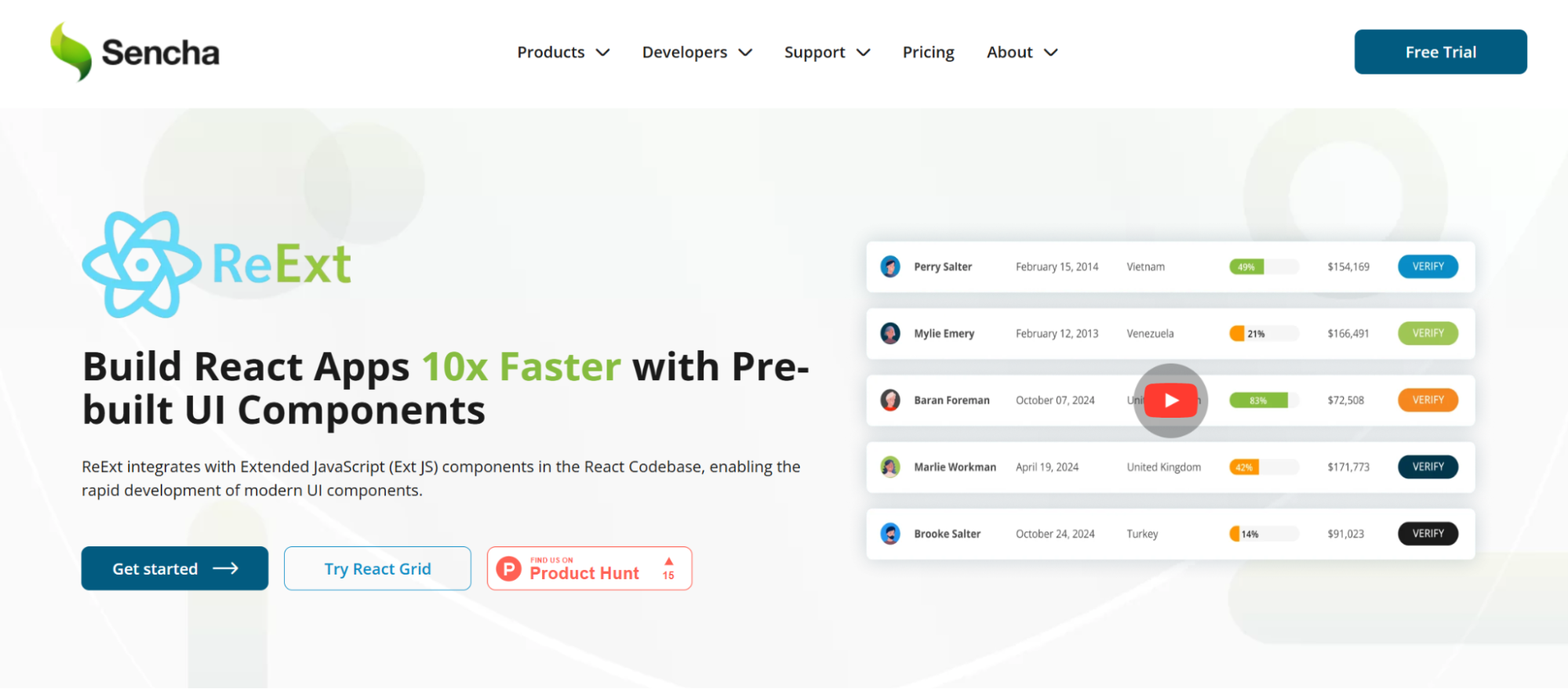
Also Read: Top Mistakes Developers Make When Using React UI Component Library (And How to Avoid Them)
How ReExt Streamlines Development in React
ReExt is a powerful framework. It allows incorporating Sencha’s Ext JS components into React Apps. It provides an effective way to develop attractive and fast web interfaces. These interfaces come with multiple features.
ReExt simplifies the development process. It integrates Ext JS’s powerful UI components with React’s versatility. Project delivery becomes faster. User experience is significantly improved. This integration enables efficient, scalable applications. It also helps mitigate common development issues.
Pre-Built Ext JS Components for React
ReExt offers a comprehensive collection of Ext JS components. These components integrate well with React applications. The React UI component library includes data grids, charts, forms, and menus. They are pre-built and ready to use, with enhanced capabilities.
These components benefit developers by saving time. Instead of building UI elements from scratch, developers can compose these components. For example, ReExt’s data grid integrates sorting, filtering, and pagination. This eliminates the need to develop overly complex features. It speeds up development and ensures consistency. The result is a high-quality UI.
Accelerated Development Process
ReExt speeds up the application-building process. Its out-of-the-box components are easy to use and modify. Developers can quickly integrate them into React projects. This allows them to focus on application logic and business needs.
The API concept simplifies component handling. Designers familiar with these components can quickly tweak and modify them. This process reduces development time and boosts productivity.
Learning ReExt is also straightforward for new developers. Comprehensive documentation makes it easy to get started. Developers avoid redundant tasks, leading to improved productivity and project completion.
Consistency in UI and UX
ReExt ensures consistent UI and UX. Its components follow best practices in design, usability, and accessibility. Each component is well-designed to maintain a consistent user experience. This guarantees a cohesive look across an application’s screens and features. Developers using ReExt create intuitive, user-friendly applications.
Consistent UI and UX reduce the need for extensive testing. ReExt components are intercompatible, minimizing runtime errors. This ensures smooth application operations. Users can navigate and interact with the application easily.
Security Features
ReExt prioritizes web application security. It includes built-in security measures to help developers build safe applications. Features like input validation and cross-site scripting (XSS) protection address common vulnerabilities. Using ReExt simplifies building secure applications.
Regular updates keep components resilient against attacks. Developers can focus on their work without worrying about security threats.
High-Performance Components
ReExt offers high-performing components designed for efficiency. It handles large data interactions effectively. For example, the data grid manages millions of records seamlessly. Features like buffered rendering and infinite scrolling keep applications responsive. Users enjoy a fast, smooth experience, even with large data sets.
Other components, like charts and forms, handle complex computations effortlessly. Developers can create applications with fast load times and responsive interfaces. High performance is crucial for user engagement and satisfaction.
ReExt speeds up React development with pre-built Ext JS components. It quickens project delivery and ensures consistent UI and UX. Built-in security features mitigate development risks. High-performing components make handling large data sets easy. ReExt simplifies complex development tasks. Developers can focus on creating exceptional user experiences, making it a valuable asset for modern, scalable web applications.
Comparing ReExt with Other Tools
In the case of using various UI React frameworks within React applications, comparisons are important. We will look at ReExt, Material UI, Tailwind UI, and React-Bootstrap. Each has unique features that make them stand out.
ReExt
ReExt is useful in React applications. It integrates Ext JS components seamlessly. It offers a comprehensive set of high-performance UI elements. This makes it ideal for data-intensive applications. It handles complex data interactions effectively with robust components. It is especially great for applications needing powerful data grids and charts.
Material UI
Material UI follows Google’s Material Design principles. It offers a wide range of customizable React components. Developers can create consistent and modern-looking applications. Material UI is supported by extensive documentation. It also has an active developer community. It is ideal for creating professional UIs with a polished appearance.
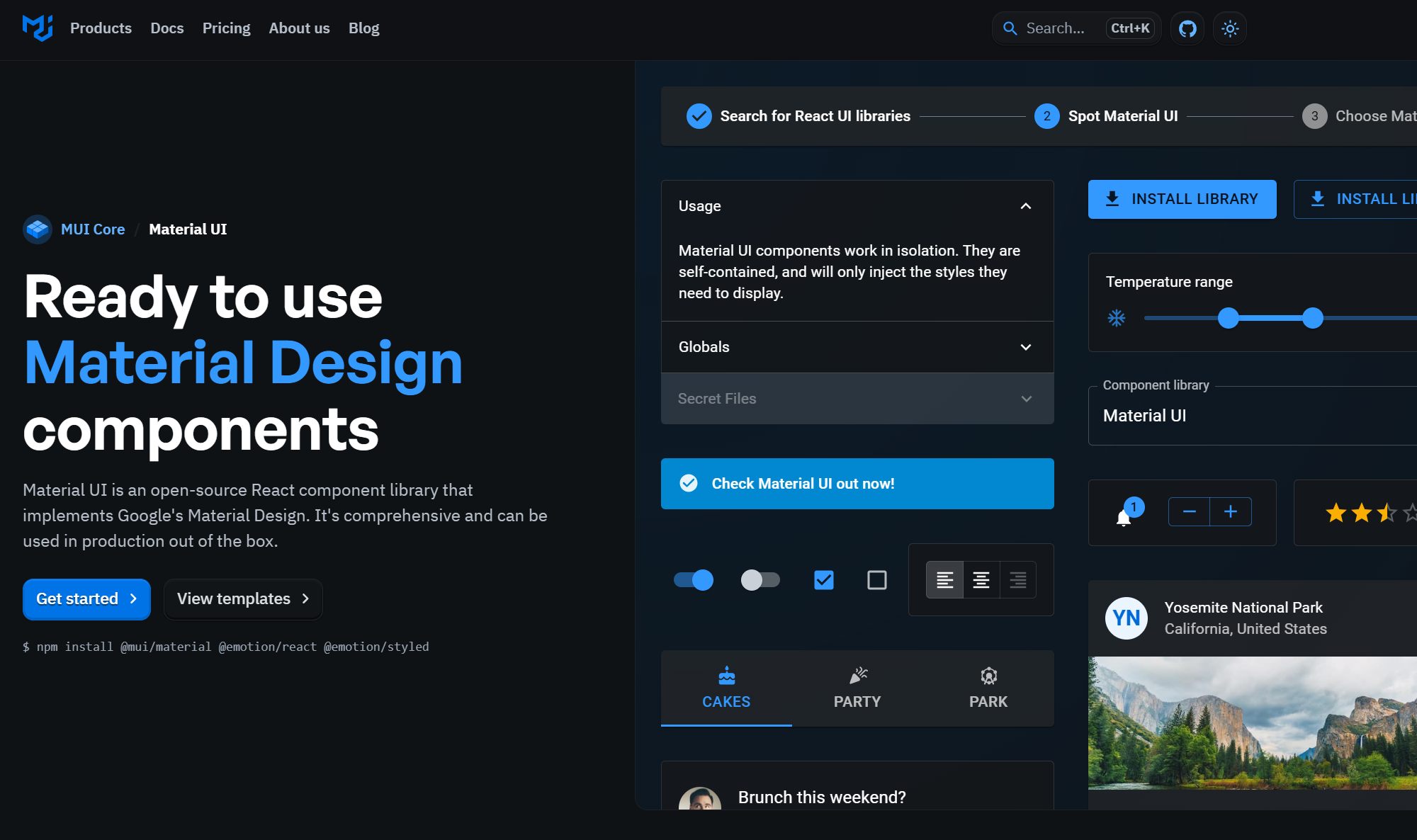
Tailwind UI
Tailwind UI is built on Tailwind CSS. It focuses on empowering designers with a utility-first approach. Developers can create custom designs using utility classes. This offers fluid and flexible interface design options. Tailwind UI is great for teams wanting unique and creative designs.
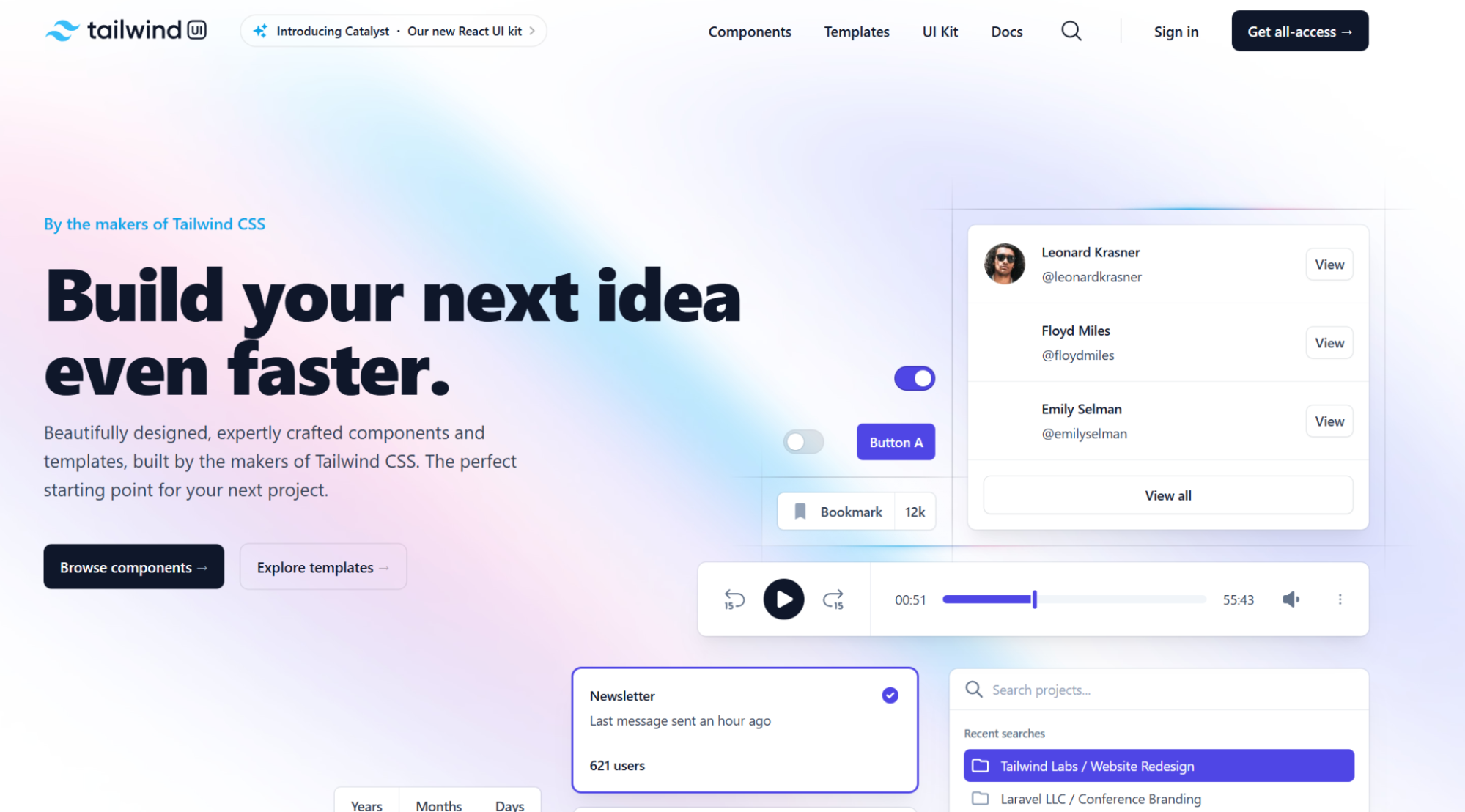
React-Bootstrap
React-Bootstrap brings Bootstrap’s features into React. It includes React components that represent Bootstrap’s grid and elements. Developers familiar with Bootstrap will find it easy to use. React-Bootstrap simplifies the creation of responsive and mobile applications.
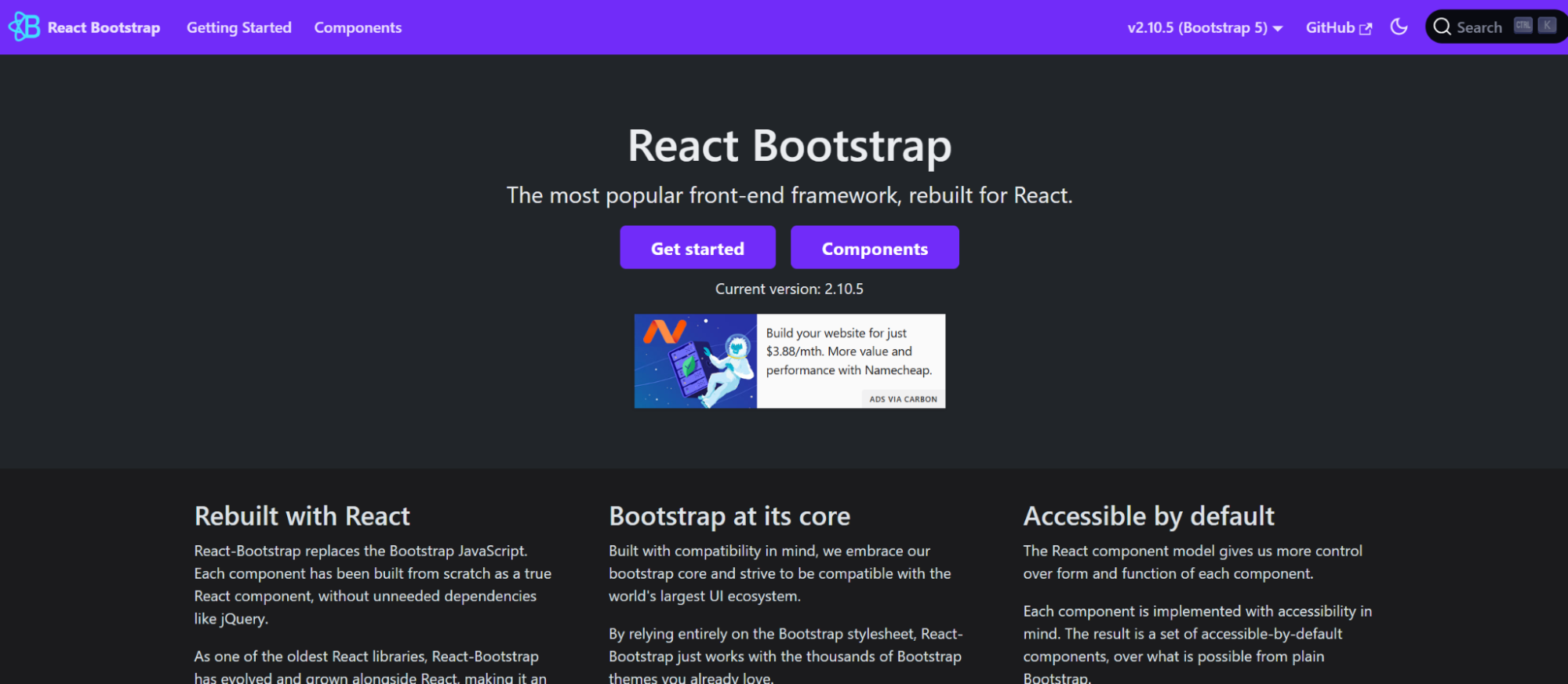
Conclusion: Why ReExt is a Game-Changer for React Optimization
ReExt is a game-changing solution for optimizing React applications. It addresses critical development issues effectively. High-performance Ext JS components increase responsiveness. This ensures performance with bulk data sets. ReExt simplifies complex tasks like server-side rendering. It offers tools for efficient data management.
The framework reduces development effort. This leads to increased productivity. Developers can create consistent UI/UX designs across applications. Built-in security features ensure strong, robust applications. Pre-built, customizable components offer versatility. This supports rapid development of scalable web applications development. For React projects, ReExt is a powerful framework.
FAQs
How does ReExt improve the performance of React applications?
It optimizes performance with high-efficiency components, buffered rendering, and data management tools.
Can ReExt be used in existing React projects?
Yes, it integrates seamlessly into existing React projects without significant refactoring.
How does ReExt handle large datasets in React applications?
It employs effective data grids, buffered rendering, and sophisticated data management for better performance.

The Ext JS Data Grid is widely regarded as one of the most feature‑rich and…

The integration of LLMs into Web application development has moved well beyond simple content generation…

ReExt is a React library developed by Sencha that allows you to use Ext JS…




